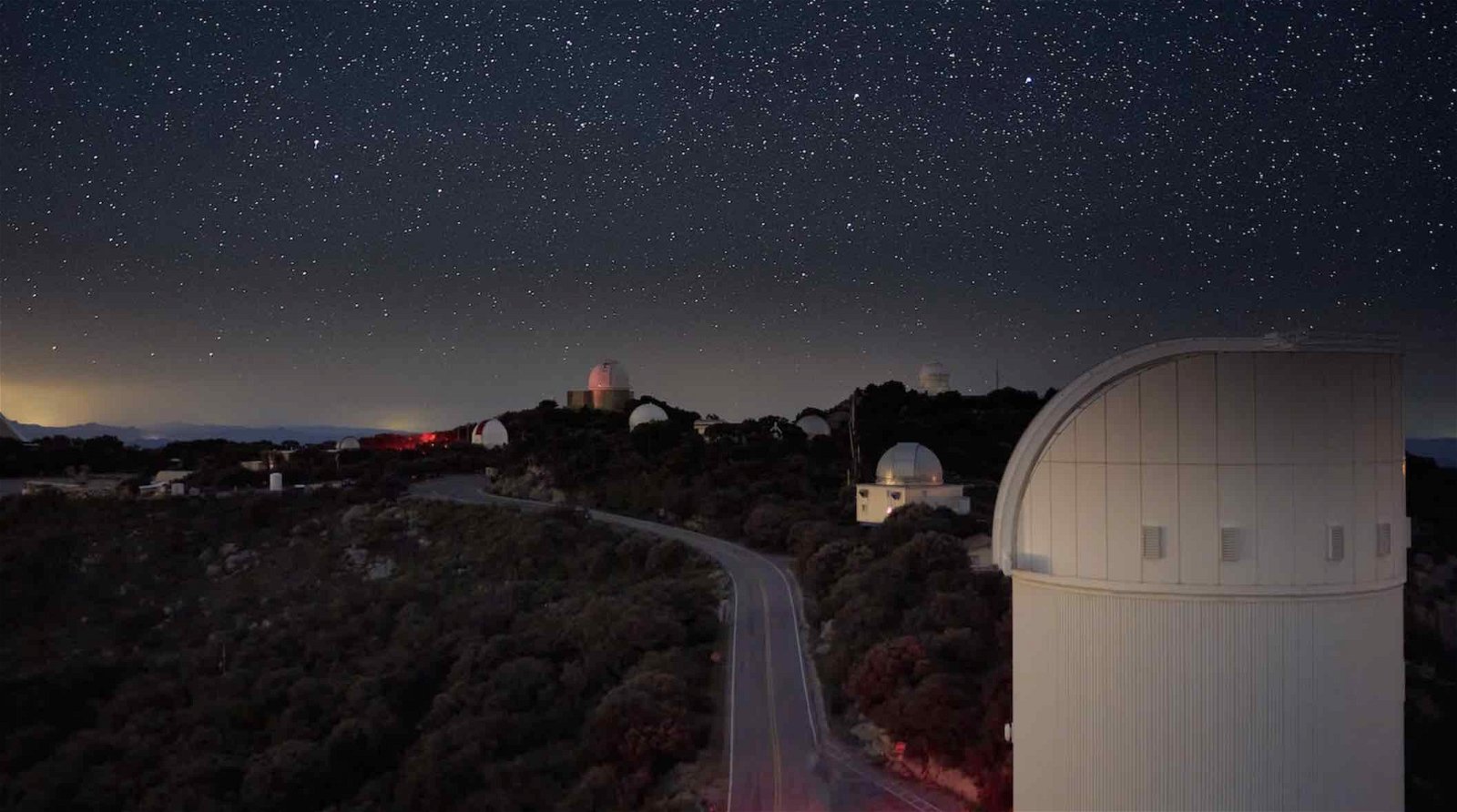Imagine if you had an instrument so powerful that you could detect any unidentified, artificial objects of non-human origin up to 100 million kilometers from our planet. Not only that, but also validate its existence, locate it in three dimensions to meter-scale precision, and get a chemical analysis of the object… and all in real-time?
Such an instrument would pique the curiosity of people worldwide, launch new domains of science, and motivate space missions to bring the machine down to Earth.
Today, several of the most well-known teams of scientists searching for Unidentified Aerial Objects (also known as unidentified aerial phenomena or UAPs) deploy ambitiously broad programs with a variety of instruments, including radar, Geiger counters, acoustic sensors, and infrared detectors, all surveilling the sky. They invest vigourously into training artificial intelligence algorithms to distinguish a pigeon from a dove, a Boeing 757 from a stealth jet, a comet from variable star, and a Chinese surveillance balloon from a truly unidentifiable, non-human aircraft. The number of flying objects such a project surveilling the sky is expected to encounter every day is numbered in the hundreds of thousands, giving rise to numerous false alarms.
While the number of false alarms might appear intangible, these research programs doubtlessly have the potential to shed light on a rich plethora of phenomena inside our atmosphere, expected as well as unexpected. But will these broad techniques of searching for the unknown be efficient in reaching the long-sought answer to the tantalizing question, “are they here?”
We need an innovative, new solution to find unidentified, non-human machines. Many readers of The Debrief will likely be familiar with the previous work of the Vanishing & Appearing Sources during a Century of Observations (VASCO), which involved searches for vanishing stars and exploratory spacecraft (so-called ”probes”) from extraterrestrial intelligence in old photographic plate images from the Palomar Sky Survey. It all started with VASCO’s unexpected finding of a mysterious Palomar image from the 12th of April 1950, where nine point-like sources of light flashed in and out of an image within 1 hour [see Fig 1., 4]. No known astrophysical phenomena could explain the finding, and we could not identify a satisfactory instrumental explanation for the observed phenomenon either. Was it real, or did we see some unusual, star-like plate defects?


The unexpected finding made us wonder: are we seeing fast flashes from artificial objects outside the atmosphere before humans even launched the first satellite? Such flashes could be intrinsic in their nature (emission) or arise when artificial objects in high altitudes around the Earth reflect the sunlight. As a follow-up, VASCO has conducted a new pilot study, celebrating its nine months under peer review. In this new study, we have searched explicitly for aligned multiple short light flashes that briefly show up in images from the early 1950s. A few candidate alignments were indeed found, presented in the very same paper [see Fig 2.]


The strength of the study is clearly the sample: the digitized images show a sky entirely clean from human-madesatellites and space debris. This sample is highly valuable to statistical studies in order to quantify the presence of such a potential ”background population” of artificial objects of non-human origin. But the data also has a weakness: even if you identify an ideal, real candidate, it will be impossible to locate the same individual candidate again 70 years later! For an individual candidate, validating and reproducing its location will never be possible. For us, this is simply not good enough. To work around this issue, the VASCO project has teamed up with SpaceLaserAwareness for an entirely new research program called EXOPROBE. SpaceLaserAwareness has developed a system for careful searches for interstellar communication lasers and has a record of publishing peer-reviewed papers in well-respected academic journals (as does VASCO).
The EXOPROBE research program presents a new system. This new system is composed of a global network of optical telescopes [see Fig 3.]. This new network of telescopes utilizes carefully designed instruments with high-speed cameras that give a time resolution, a spatial resolution, and a spectral resolution of any discovery. Each object is localized in three dimensions so that we can extract where exactly an alien probe is. By now, we have tested prototypes of such a telescope.


Compared to other projects, the new design of EXOPROBE allows us to detect, localize, verify, and reproduce the finding in real time. All this becomes possible when instead of looking for the ”unknown” among millions of objectscrossing the sky (“UAP science”), we focus on searching for an identifiable signature of the unidentified object: in our case, bright, short flashes occurring outside the Earth’s atmosphere. An important aspect of our design is that we use a technique to remove human-made objects and space debris, minimizing the number of false positives.
We want to do everything to achieve 1-meter accuracy in locating the unidentified object. This is also where the second phase of our project enters. Upon the discovery of such a probe, we plan to bring it down to Earth. What could we humans not learn from putting our hands on another intelligent civilization’s masterful creation? What mysterious secrets can be held by a small ET box? Any organization that lays its’ hands on an ET probe, especially an active one, will push the expansion of human knowledge beyond our imagined boundaries. Why shouldn’t we do this program ourselves rather than wait for a government agency?
This ambitious goal of bringing down a non-human surveillance probe is not unproblematic. If the probe is discovered, it may have plenty of time to move out of orbit or hide before a government mission to fetch it has been approved in a long bureaucratic battle. Government missions of this kind usually take a decade or two. But time is precious when dealing with such a probe. Ideally, a space mission to fetch it cannot wait more than a few days – a time window needed for reproducing and validating the authenticity of the finding but also minimizing the risk for the probe to ”vanish.” There are several ways of traveling a few million miles to reach the probe, and the greatest challenge will be to identify the proper pathway for collecting it.
The EXOPROBE project is searching for partners, both private and governmental, who are interested in collaborating with us on this mission. We are taking the scientific method to its most extreme: bringing that extraordinary evidence down to the Earth. Our project management has established detailed plans for the technical design, data analysis, and deployment of the global network of telescopes. We rest on a track record of scientific awards in astrophysics and SETI. After five years, the VASCO project has also completed its search for vanishingstars through both automated searches and a citizen science project (a forthcoming paper that focuses on results is currently in progress).
SpaceLaserAwareness produces a stream of results searching for unidentified laser communication in space andunidentified surveillance balloons. Our new goal, therefore, is timely and has a team with decades of experience in space observations. We even have an astronaut on our team that has volunteered for the space mission.
It has been 28 years since the first exoplanets were discovered around normal stars like the Sun. Since then, we learned from the NASA Kepler mission that more than 20% of the stars, similar to our Sun, has an Earth-size planet in their habitable zone, where liquid water can exist. This implies that our home Milky Way Galaxy contains some 40 billion warm, Earth-size planets. We have learned that asteroids and meteors contain amino acids, the basic building blocks of proteins. Voyager and Pioneer’s entering interstellar space has removed any doubt that humans can send a spacecraft to other stars. Other civilizations would surely send probes to our Solar System to investigate our pale blue dot with its tell-tale oxygenated atmosphere.
Sixty years of extensive radio searches with huge telescopes such as the Green Bank Telescope and the Allen Telescope Array have led to no viable candidates among over 300,000 stars. The time has come to search for a new route forward in SETI research. One option may be to examine the broad range of unidentified objects in our skies. But such an effort still suffers from the age-old search for a needle in a haystack with hundreds of thousands of false positives.
As internet providers launch many tens of thousands of satellites in the coming years, our time window is tightening fast. If we want to fetch the probe, these searches must start now. With our science program, the new generation of optical searches for extra-terrestrial intelligence has just arrived, marrying the most important questions from UAPscience. With the EXOPROBE program, Fermi’s old question of “where are they?” expands into a new dimension.
To all space companies, astronauts, engineers, private actors, and experts who wish to join us on our ambitious adventure… your moment is now.
Beatriz Villarroel is the leader of the VASCO project, which incorporates more than 40 members in different countries. She is a researcher at Nordic Institute for Theoretical Physics (Nordita) in Stockholm.
Geoff Marcy is a pioneer in the search for exoplanets, and was involved with the discovery of 70 of the first 100 exoplanets ever detected, including the first planet in a Newtonian eccentric orbit. He is recipient of the prestigious Shaw Prize (2005, shared with M. Mayor) for his exoplanet work and other awards including Carl Sagan Award (2002). He is currently the director of SpaceLaserAwareness.
REFERENCES
- The VASCO Project
- “Evidence of Non-Terrestrial Objects Surveilling the Earth May be Revealed in New Research Effort”
- Villarroel, Marcy et al. (2021)
- Villarroel, Mattsson et al. (2022a)
- Villarroel et al. (2022b)
- http://www.spacelaserawareness.org
- Solano et al. 2022
- Villarroel et al. (2022c)
- https://www.space.com/vasco-vanishing-stars-citizen-science-project
- Marcy 2021
- Marcy 2022
- Marcy & Tellis, 2023
- Mayor M. & Queloz D., 1995, Nature, 378, 355
- Marcy G. & Butler R.P., 1996, ApJ, 464, L147
- Petigura, E. A., Howard, A. W., & Marcy, G. W., 2013, PNAS, 110, 19273
- Elsila, J. E., Glavin, D. P., and Dworkin, J. P. 2009, Meteoritics & Planetary Science, 44, 1323
- Parker E.T., Chan Q.H.S., Glavin D.P., Dworkin J.P., 2022, Meteoritics & Planetary Science, 57, 776
- Garrett M.A. & Siemion A.P.V., 2022, accepted into MNRAS

